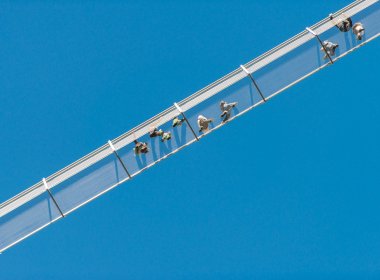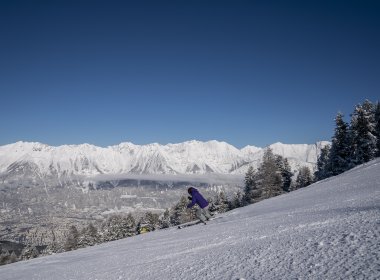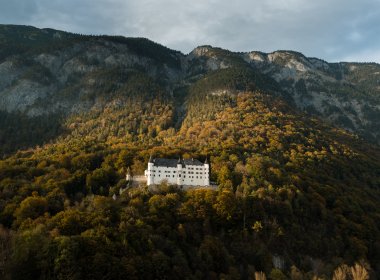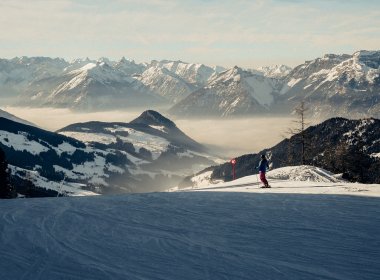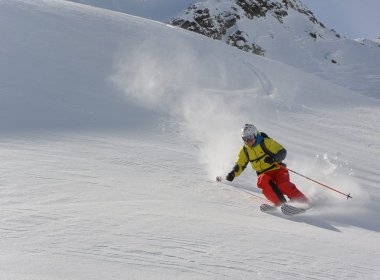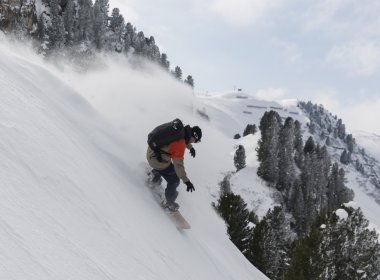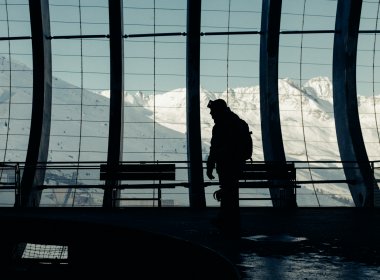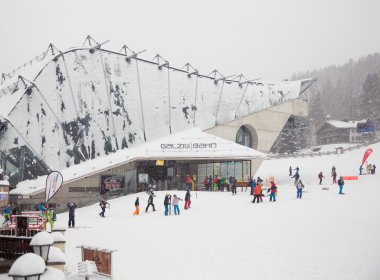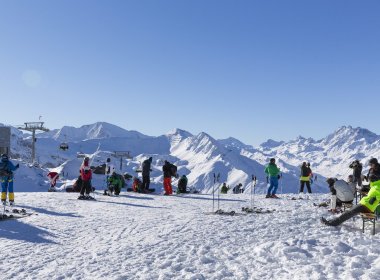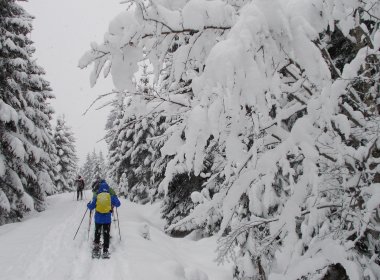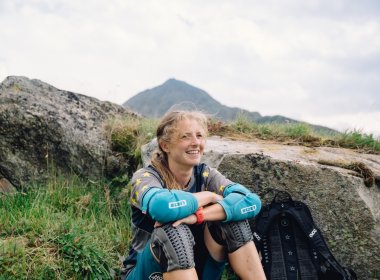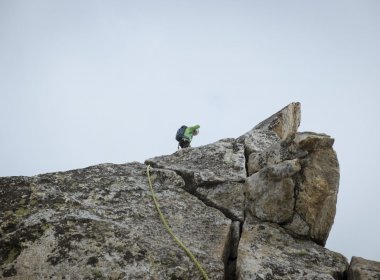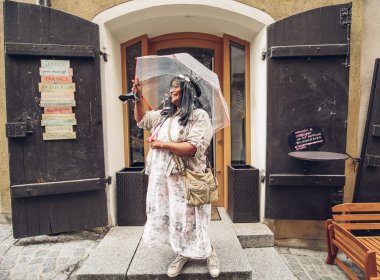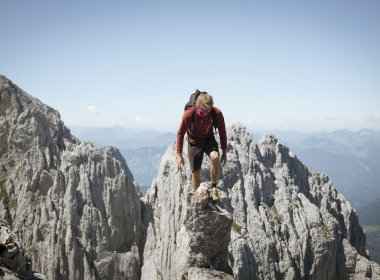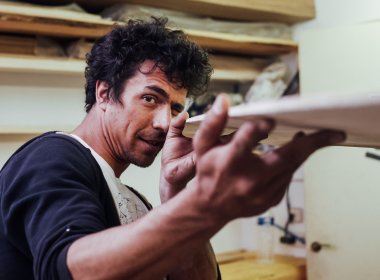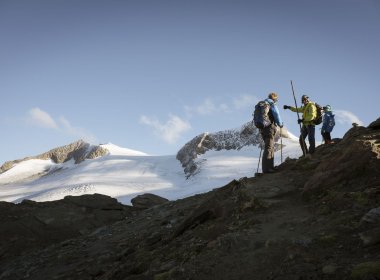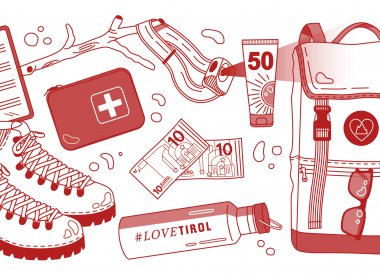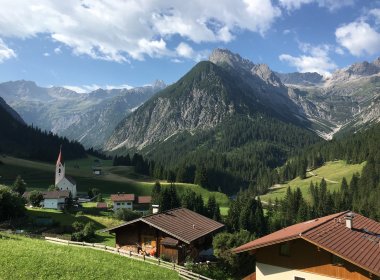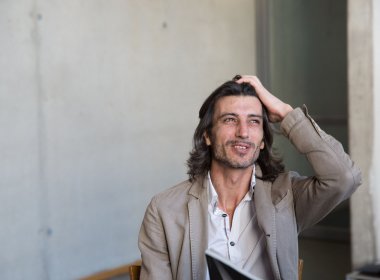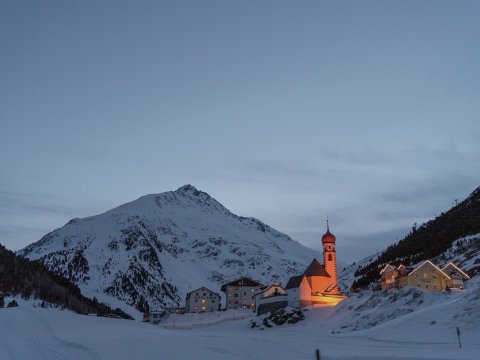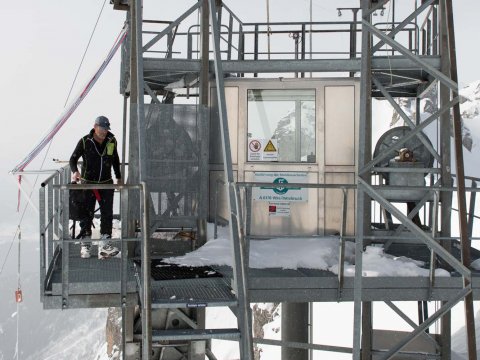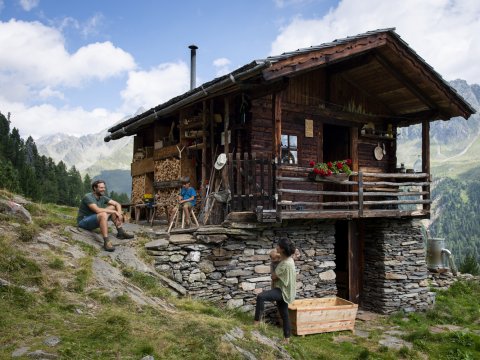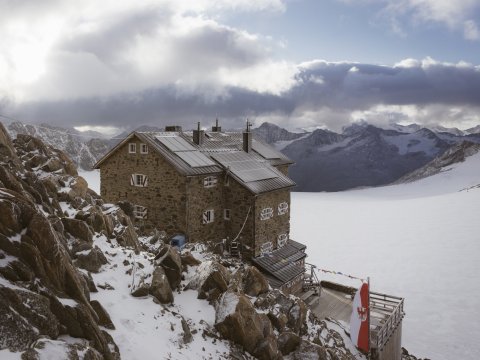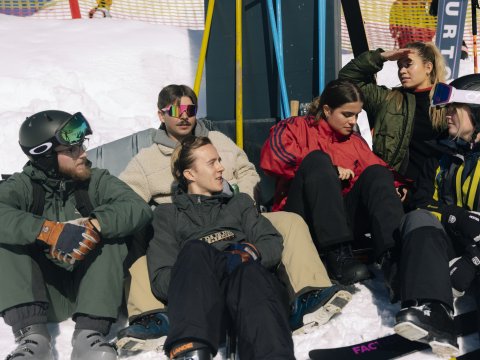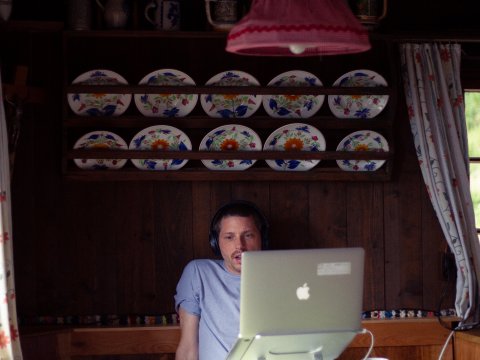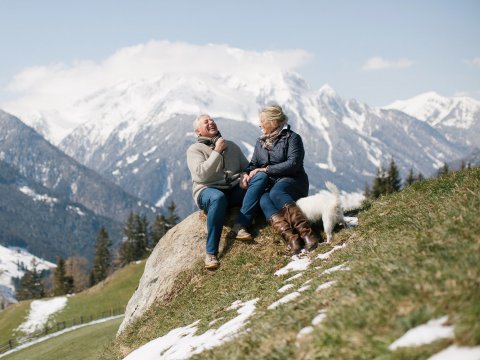Summit Stories: Kilian Scheiber, Wildspitze
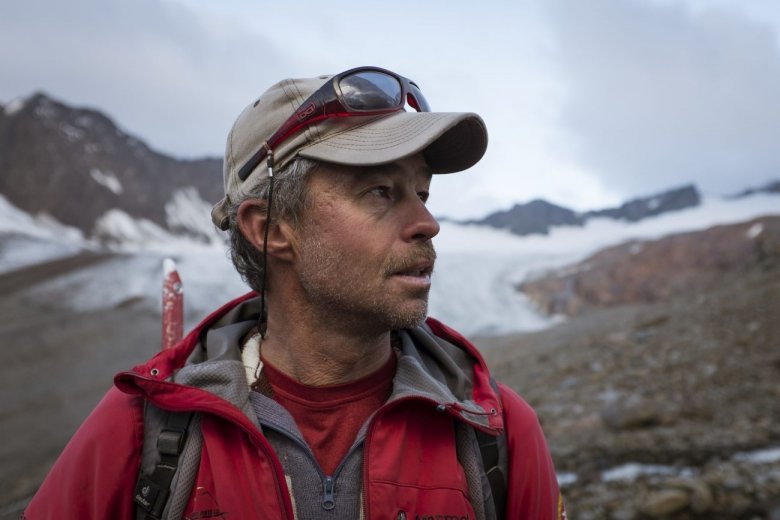
Asked what his favourite season is, Kilian Scheiber doesn't hesitate for a moment: “Winter.” Maybe that’s the reason why we meet in the middle of August at an elevation of 2,755 metres, where even now in the height of summer the weather is wintry. Outdoor temperatures at the Vernagthütte hut the in Venter Tal Valley, a side valley branching off the larger Ötztal Valley, are forecast to stay around zero degrees Celsius today. Early in the morning we leave the hut heading towards the Wildspitze mountain with our guide Kilian, a wiry man in his fifties. He loves snow and ice – after all, he grew up with it. He first stood on the summit of Wildspitze at the age of seven, together with his father, who is a mountain guide as well. He grew up at the Rofenhöfe, a series of farmhouses which make up Tirol’s highest-lying permanent settlement.
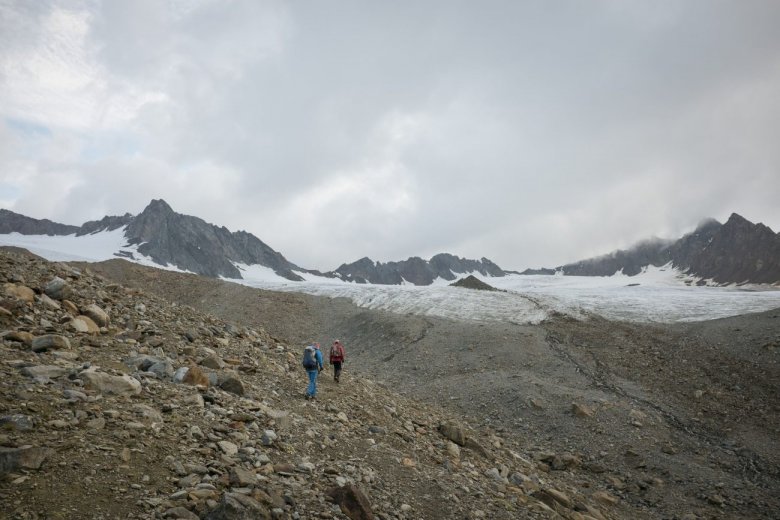

Kilian’s long journey to the Wildspitze
Kilian received his mountain guide certification in 1996 and took over his parents' guiding business. He has climbed the Wildspitze more than 400 times – though it was not his favourite mountain in the beginning. “When I was younger, I preferred climbing the Similaun mountain. This is still my personal favourite when it comes to ski touring. I have done some of my most epic downhill runs there. I once guided a client from Innsbruck to watch the sheep-drive up there. We had to carry our skis all the way up to the Martin-Busch-Hütte, where we skinned up and climbed to the top of the Similaun. We then had a sensational run down through untracked spring snow. It was like floating on clouds, smooth as butter.”
Today, however, we are going to climb the 3768-metre Wildspitze. It is the highest mountain in North Tirol and the second-highest in Austria. That is something which makes special – a fact which Kilian has come to realise over the years. “In the beginning I did not really like the Wildspitze. I can’t tell you why. Maybe it’s because it is a peak that is on everyone's bucket list. That kind of turned me off and made we want to go elsewhere. But then one day, the more often I scaled its heights, the more I fell in love with that mountain. And now I can say truthfully: I really like the Wildspitze.”
Today, Kilian is showing us his favourite route to the summit. And soon we recognise: Kilian doesn’t like shortcuts! There are, after all, a number of shorter routes to the top of this mountain. Kilian, however, shows us along its longest route. It leads from the Vernagthütte hut across the snow and ice of the Vernagtferner glacier and over the Brochkogelscharte notch before passing below the northern side of the Hinterer Brochkogel mountain and crossing the Taschachferner glacier on its way to the southern summit of the Wildspitze. From there, Kilian’s best-loved route traverses the ridge to the northern summit and winds along the Rofenkarferner glacier down to Vent. This route involves hours and hours of climbing with crampons over glacial ice and snow. And that’s exactly what Kilian likes most about this route to the summit. “This way we can cross three glaciers.”
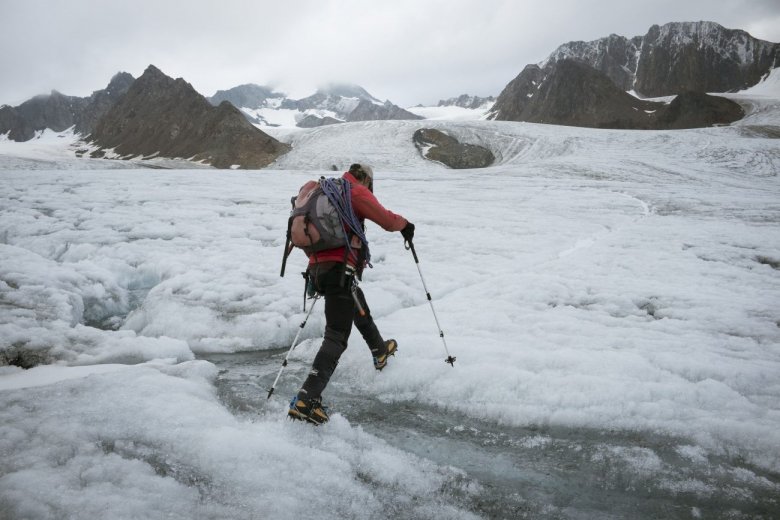
“In the end it comes down to the weather.”
Kilian leads the way. There is low lying cloud cover, but talking to Kilian, the term ‘bad weather’ gets a completely different meaning. He once tried to tackle the route in the middle of summer with half a metre of fresh snow. “All that wading through deep snow was simply too strenuous. Usually it takes four hours to get from the Breslauer Hütte to the top. We had been climbing for three hours and hadn’t even got halfway.” And three days before my visit he had led a group in a snow storm, climbing up to 3,500 metres above sea level. “Really dreadful weather,” he remembers. In the end they turned around and returned to the hut. Having heard all those stories, it seems like we have been pretty lucky with the weather today.
Some 150 vertical metres above us runs the Vernagtbach stream. We follow a glacial moraine. “Moraines are formed of debris previously carried along by the glacier. Lateral moraines mark the maximum advance of the glacier, as it was 150 or 160 years ago. Around 1850, the whole valley was one huge glacier.” Kilian gazes down at a tiny cabin on the banks of the Vernagtbach stream. It is used by scientists for glacier research. Experts believe the remaining parts of the Vernagtferner glacier will probably melt away in the next 20 years. By that time, Kilian’s son Ronald will be a man. We meet the twelve-year-old at the Vernagthütte hut, where is helping out during the summer holidays. Ronald first climbed the Wildspitze as a six-year-old, in August 2010. “He desperately wanted to beat my record,” says Kilian with a smile. That was a very special day for Kilian in two ways. As well as reaching the top together with his son, Kilian also installed a new cross on the summit that day to replace the one that had stood there for the last 77 years. A risky venture. A daring manoeuvre. And a job demanding absolute precision. Kilian had to place the new cross, dangling on the end of a rope held by a helicopter hovering above, exactly into the pedestal of the old cross. Any mistake or sudden gust of wind and Kilian would have been thrown from the narrow summit ridge. In the end it all went to plan.
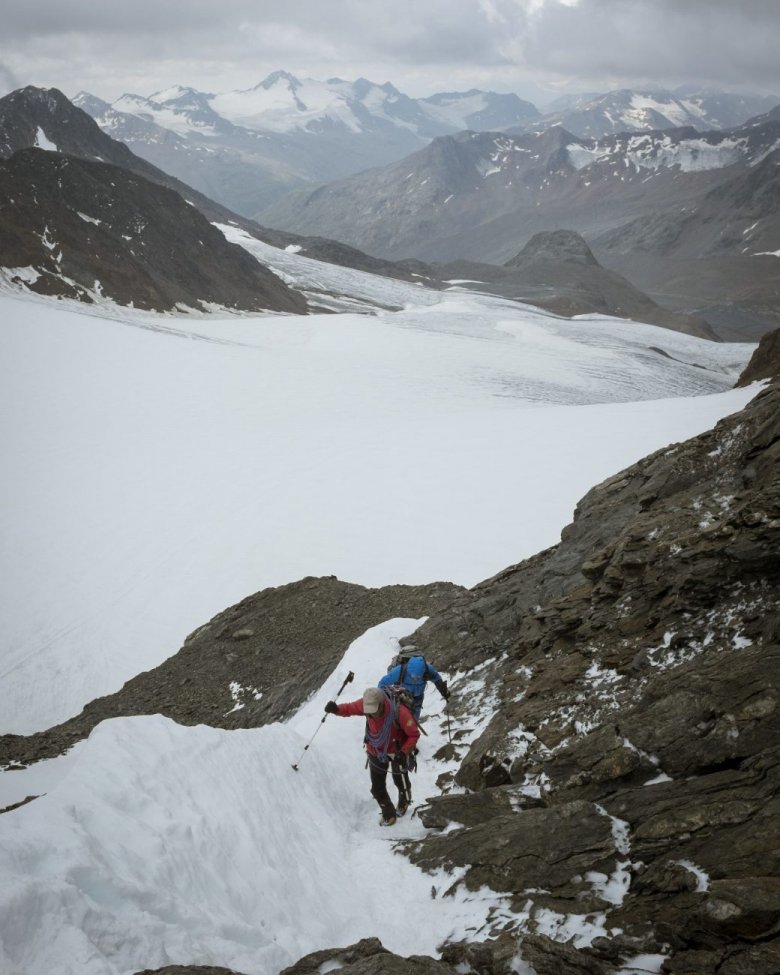

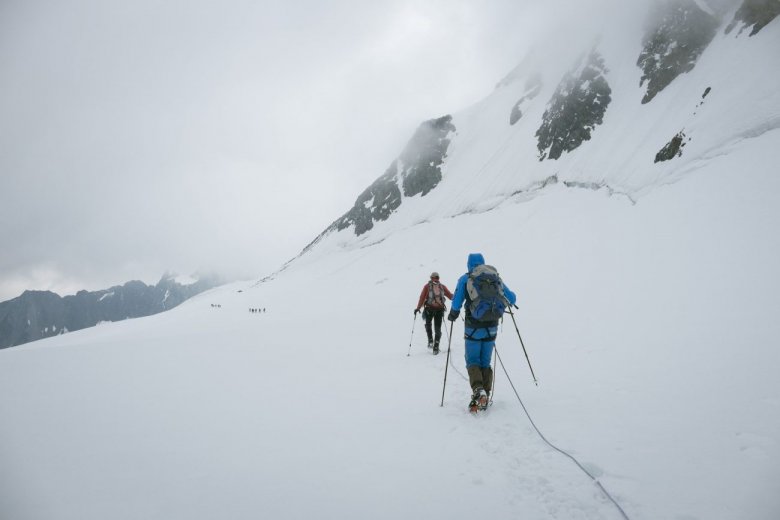
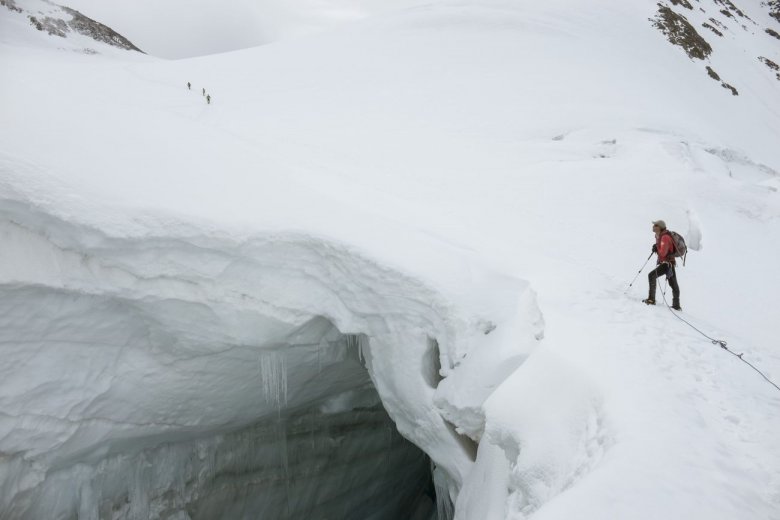
En route, Kilian doesn’t speak a lot. At the Vernagtferner glacier we begin to climb with a rope and a harness. Kilian navigates us through a maze of glacial streams, moulins and crevasses until we reach a rock formation. From there, a steep path climbs to the Brochkogeljoch col. The crampons scrape the rock with a sound similar to that of nails on a chalkboard. Having tackled the 50 vertical metres, we are greeted up on the ridge by a freezing wind. All we can see is the snow and ice of the Taschachferner glacier. According to Kilian, we are currently in the largest glaciated region anywhere in the Eastern Alps. “That’s the best thing here. You can find stones on any mountain. But, thank God, up here we still have glaciers.” It really feels like winter up here – and that’s exactly what Kilian loves about glacier mountaineering.
He promises us stunningly jaw-dropping views of the Wildspitze from the the Brochkogel mountain. When we reach that bespoke point, however, all we can see is ... nothing.
We stop and look down into a crevasse so deep and wide you could easily lower a house into it. The cloud cover opens up a little. We are granted our first teaser view of the cross on the summit. “When climbing this high it is all about the weather,” says Kilian. “The weather can change the conditions in a massive way. Climbing the 40-degree slope from the Breslauer Hütte in icy conditions is demanding and strenuous. When there snow, like now, going up is a lot easier.”
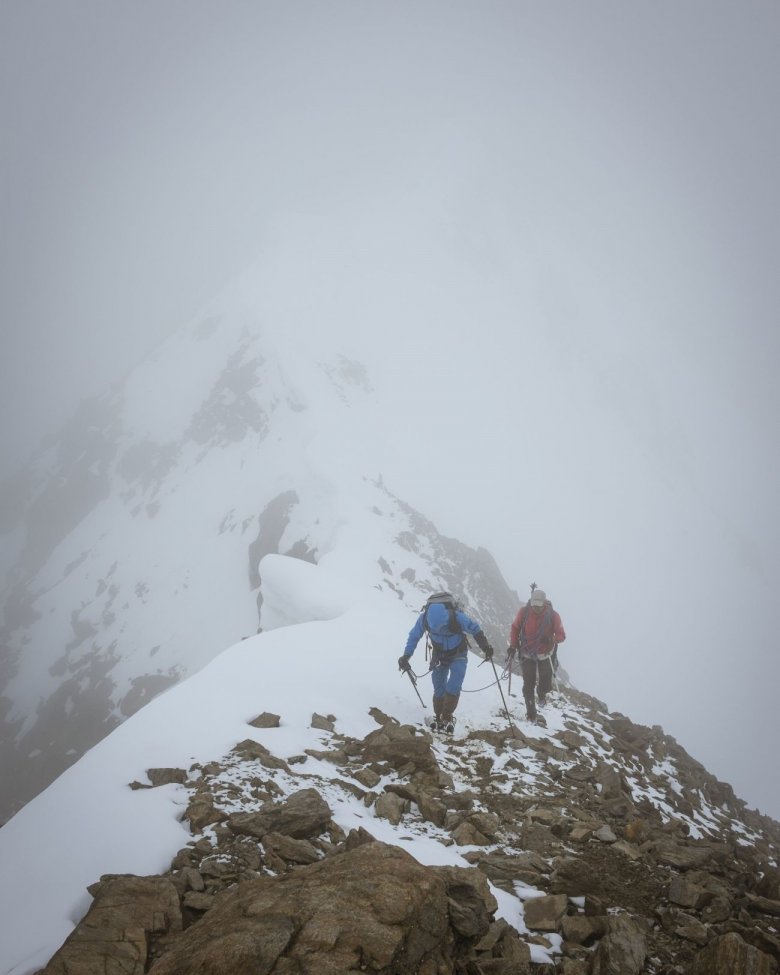
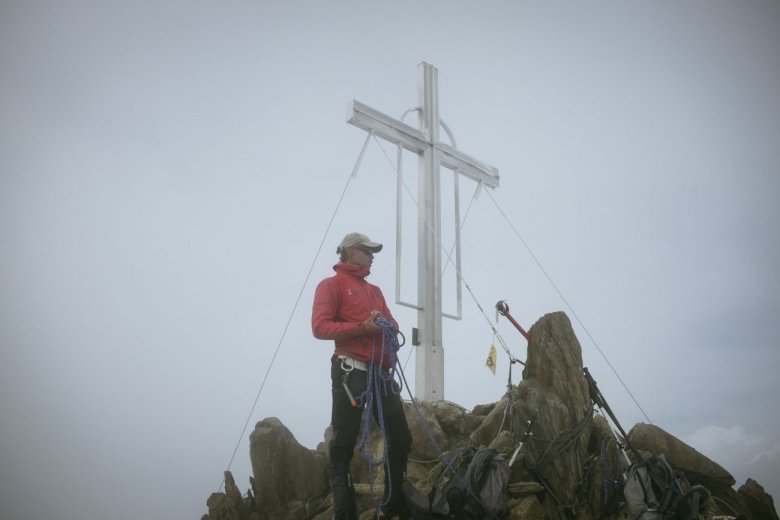
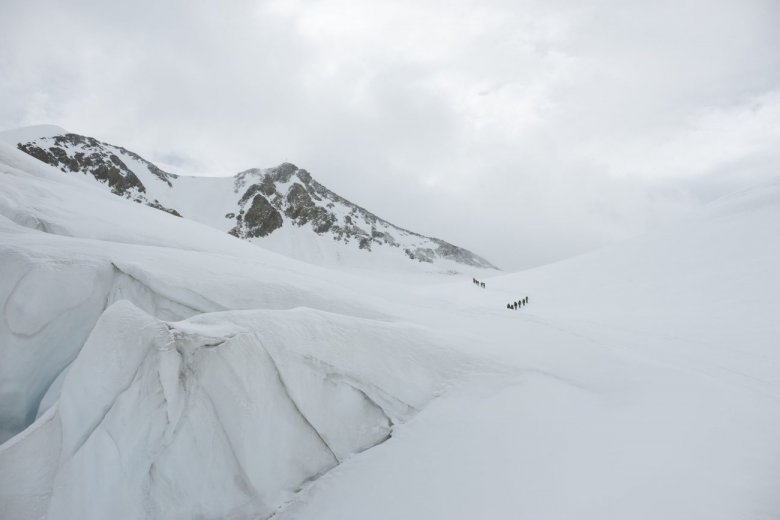
Breaking the ice
A few metres below the summit we meet a group of mountaineers on their way back down. This exposed ledge falls away steeply. A narrow chasm is all that is keeping us from the summit. The final push to the top is only a few steps up. And, of course, getting to the top is a cause for celebration. Kilian opens his hip flask and we all take a sip while standing next to the cross on the summit that he and his fellow mountain guides installed here in 2010. His father first climbed the Wildspitze at the age of 19, says Kilian. Sixty years later, at the age of 79, he was keen to bag that peak once again. This time, though, his son led the way. “So many years after my first ascent, I had the honour of guiding my father as we climbed that summit together. That was a great experience which has etched itself into my memory.”
Kilian points to the northern summit of the Wildspitze. “It has got a core of snow and ice. Looking at historical maps, the summit actually used to be higher.” Today, due to melting, it is lower than the rocky southern summit. On some days the summit is bustling with climbers, but due to the less-than-ideal weather we have got it to ourselves. Again, the cloud cover opens up a little and we can see the summit ridge in front of us. We traverse the narrow ridge to the northern summit and descend through deep snow. Passing an icefall, we follow a section known as Martin’s Boulevard down to Rofenkarferner glacier. A fellow mountain guide showed Kilian this path. “'Where is he going?' I thought to myself”, Kilian tells us. “There’s a near-vertical drop in the rock face behind. Suddenly, the rock gives way to a tiny path. As my fellow guide’s name is Martin, and it was him who showed me this passage, I called it ‘Martin’s Boulevard’.” Kilian shows us another mighty icefall. “And that’s what I call the ‘Take-Off Ramp’. One day ski jumpers will launch themselves from this ramp,” he adds, laughing. The ice has definitely broken between Kilian and the Wildspitze.
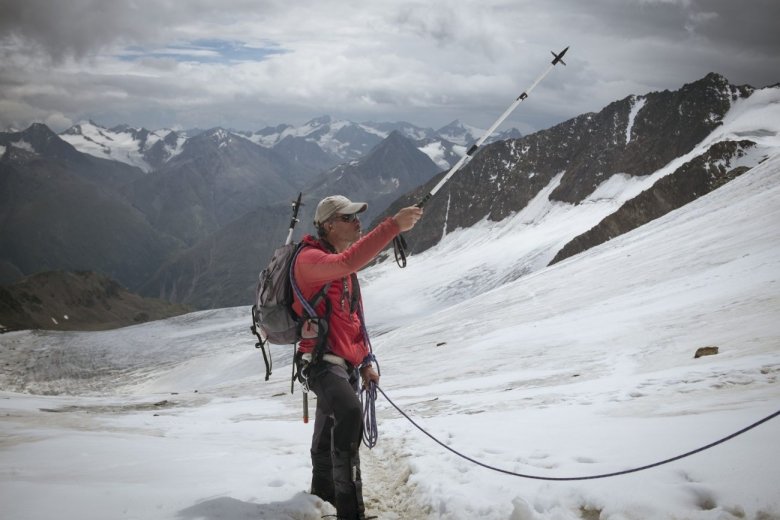
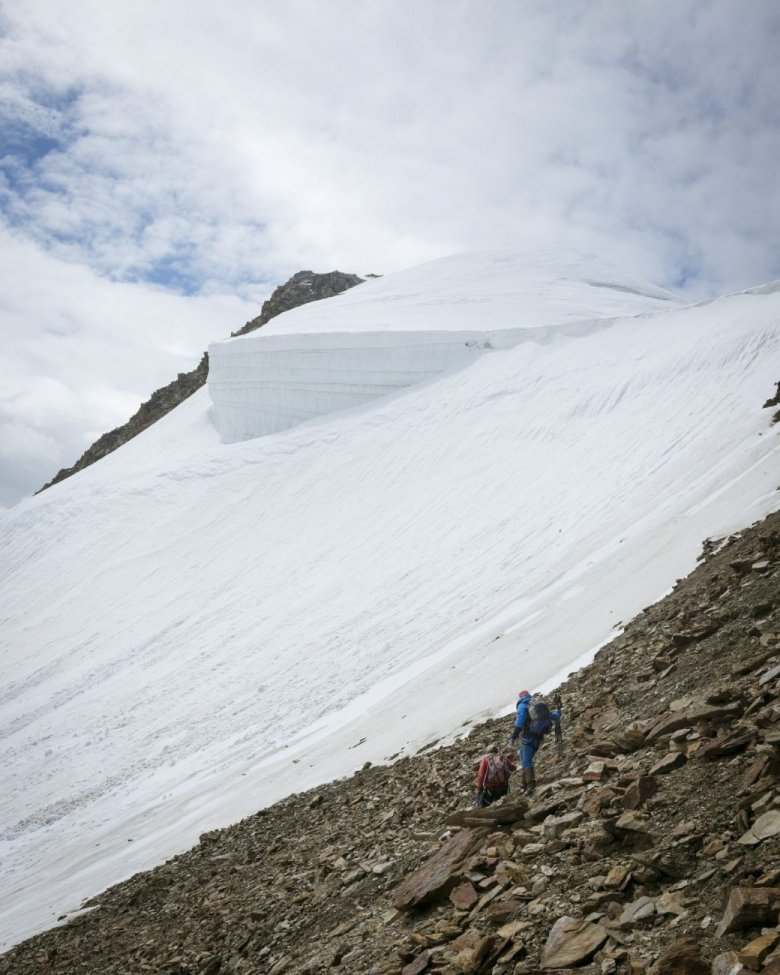
—
Großglockner, Wildspitze, Großvenediger, Wilder Kaiser, Olperer – we meet five mountain guides from Tirol and learn about the summits that have shaped them.
If you want to join Kilian Scheiber for a guided tour, please visit the website www.bergfuehrer-vent.at










